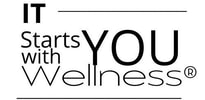1.2 (B) Levels of Anxiety
Levels of Anxiety:
1. Mild anxiety: is the typical anxiety one may feel from day to day. A solution seeking level based on a fear of a challenging event. You may feel uncomfortable, but not overwhelmed, with little compulsion trying to solve the problem, yet still in control. You may notice yourself fidgeting, being more irritable, and your palms may sweat.
2. Moderate anxiety: in addition to the above symptoms, a person may also feel overwhelmed, with increased compulsion about the problem, or with increased sensations in the body. You may have symptoms such as nausea, sweating, increased irritability, heart rate and blood pressure increase, belly aches and increased muscle tension.
3. Severe anxiety: when a person can experience panic attacks, which might feel like a total loss of control of the entire body; feeling helpless, hopeless, and exhausted. At this level, you wouldn't be able to get the issue out of your mind, and are completely overwhelmed with compulsion over it. You may have a hard time getting to sleep, or may wake up in the middle of the night frequently, as your mind is focused completely on what is bothering you. You may have symptoms such as dizziness, high heart rate, high blood pressure, sweating, stomach aches, loss of desire for normal activities, exhaustion, shaking, feeling out of control, depressed, and alone.
1. Mild anxiety: is the typical anxiety one may feel from day to day. A solution seeking level based on a fear of a challenging event. You may feel uncomfortable, but not overwhelmed, with little compulsion trying to solve the problem, yet still in control. You may notice yourself fidgeting, being more irritable, and your palms may sweat.
2. Moderate anxiety: in addition to the above symptoms, a person may also feel overwhelmed, with increased compulsion about the problem, or with increased sensations in the body. You may have symptoms such as nausea, sweating, increased irritability, heart rate and blood pressure increase, belly aches and increased muscle tension.
3. Severe anxiety: when a person can experience panic attacks, which might feel like a total loss of control of the entire body; feeling helpless, hopeless, and exhausted. At this level, you wouldn't be able to get the issue out of your mind, and are completely overwhelmed with compulsion over it. You may have a hard time getting to sleep, or may wake up in the middle of the night frequently, as your mind is focused completely on what is bothering you. You may have symptoms such as dizziness, high heart rate, high blood pressure, sweating, stomach aches, loss of desire for normal activities, exhaustion, shaking, feeling out of control, depressed, and alone.
